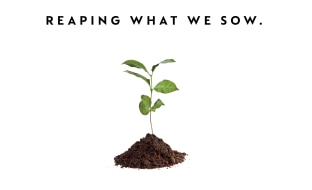Header
Doing is everything
A MESSAGE FROM OUR CEO
Guillaume Le Cunff, CEO of Nespresso
OUR COMMITMENTS
DOING IS EVERYTHING
We will keep doing everything we can to produce the finest coffee while preserving the best of our world and supporting farmers' livelihoods.
Our three commitments to making coffee a force for good are: Reducing, Reusing and Recycling.
Everything for Positive Impact
We are convinced that coffee can be a force for good because it can shape communities and preserve landscapes better.
By the end of 2020, we will reach the goals of our current sustainability ambitions:
Everything for Wasting Nothing
We commit to accelerate our efforts in reducing, reusing and recycling.
Everything For Their Tomorrow
Creating a better tomorrow for farmers has always been our priority. That is why our commitment is to ensure farmers achieve a stable and viable living from coffee.
UNCOVERING THE STORY OF A CUP'S CARBON FOOTPRINT
Behind the Scenes
To reduce the carbon footprint, we look at every aspect of the lifecycle of a single cup of coffee.
We invite you to explore the positive environmental impact of your cup of coffee has from beginning to end.
Three sides to every story
The main chapters of your coffee’s carbon footprint*:
Chapter 1: How a cup of coffee is prepared.
Chapter 2: How green coffee is cultivated and transported.
Chapter 3: How the coffee is packaged.
*Source: Quantis 2020 Swiss B2B LCA
The Main Actors
Almost half of your coffee’s carbon footprint (45%) comes from how it’s prepared at home.
The precision brewing system uses only what’s needed – optimizing coffee, energy and water usage – making it a sustainable way to enjoy coffee.
*Source: Quantis 2018 Swiss B2C LCA
The Plot Thickens
The way green coffee is cultivated and transported accounts for 35% of each cup’s carbon footprint.
That’s why using a precise amount of coffee in our capsules and promoting sustainable farming practices are key to improving our carbon footprint.
Source: Quantis 2018 Swiss B2C LCA
A New Chapter
At 14%, packaging is the 3rd contributor to your coffee’s carbon footprint.
To further reduce it, our goal at Nespresso is to have our Original and Vertuo capsules made using 80% recycled aluminium by the end of 2021.
More about our circularity initiative
Plus, when you recycle capsules, you further reduce the carbon footprint of your coffee.
Closing Credit
In 2018, we brought in the expertise of Quantis, a globally recognized sustainability consulting group, to conduct a Product Life Cycle Assessment of a cup of Nespresso coffee.
The study has been reviewed by independent experts and followed ISO 14040/44 standards. It is based on 110ml of Lungo Nespresso, an Inissia machine and done in Switzerland.
DOING IS EVERYTHING

Reducing Wastage

The story continues

RE-RE-RE-RECYCLE

Without writing a word, this pen says it all

Reusing Recycled Aluminium

Recycling Used Coffee Grounds
STEPPING UP
Nespresso is proud to be partnering with Conservation International to gift back to the forest this Festive season.
Stepping beyond coffee farming to support communities that call the forest home, Nespresso is contributing to the protection of 10 million trees in the Amazon Forest in La Pedrera, Colombia - where Conservation International and the Madroño community work on preserving the area’s forests.
To New Horizons
Partners like PUR Projet and Technoserve have helped Nespresso and local coffee farming communities to understand the gifts of the forest, through agroforestry.
Agroforestry is an agricultural practice in which trees are grown around or among crops, for soil protection, water replenishment, windbreak, temperature regulation, and additional income - so that not only your coffee, but also the surrounding ecosystems can benefit from the gifts of the forest.
From the forest, for the forest
For nearly 20 years, the Rainforest Alliance has worked with Nespresso to help secure the stable, long-term supply of sustainably-sourced high-quality coffee, whilst protecting the natural environment and supporting the wellbeing of farmers and communities; through training on farm management for increased productivity and improved harvest quality; and by helping build resilience to climate change through climate-smart agricultural practices.



